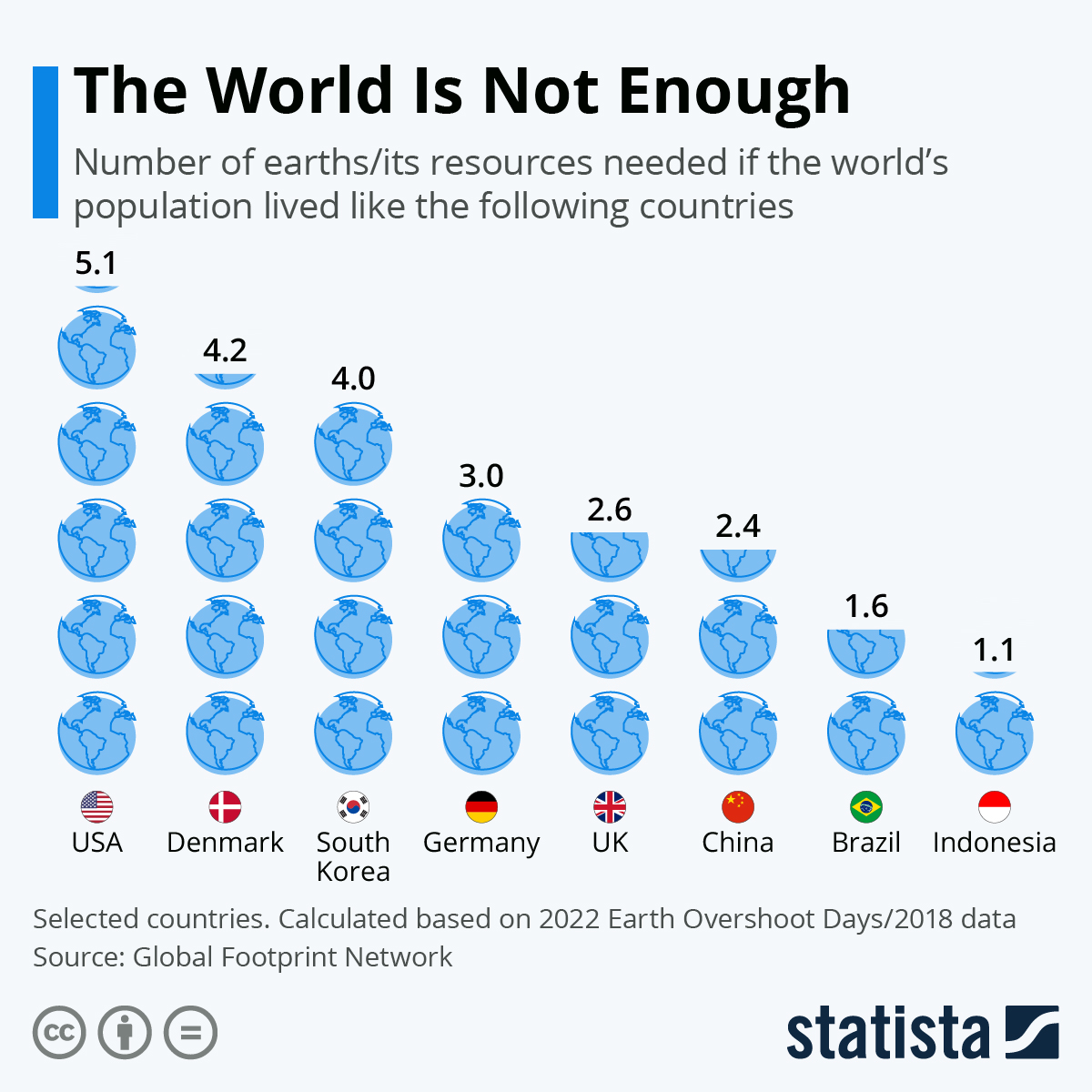Although it may be difficult to imagine because of its size, the Earth does have its limits. While there are resources that are renewable if we use them wisely, water, soil, and forests, for example, when it comes to fossil fuels and minerals, there is only so much and we have been using these at increasingly rapid rates over the past 150 or so years.
Based on present consumption rates and all of the information presently available on fossil fuels still in the ground, and excluding unproven reserves, globally we have about 42 years of oil left, about 52 years of natural gas, and approximately 133 years of coal. However, and this is a big, however, this assumes that rates of consumption don’t increase, which has not been the historic pattern. We have continued to use increasing amounts of most fossil fuels every year. This has led to increasing amounts of carbon dioxide emissions, year after year, which has produced the warming of the planet and all the impacts we are now experiencing.
The human population of the Earth now stands at 7.9 billion, and we are on track to add about 80 million more people this year, roughly the entire population of Germany, or the combined populations of Iraq and Afghanistan. Each of these people will need things to stay alive on the planet, although depending upon where you live and your lifestyle, some will consume far more resources than others, energy, food, water, and lots of non-essentials as well.
We will also produce about 80,000,000 more cars and about 245,000,000 new computers this year! The manufacturing of automobiles requires a lot of specific materials, elements which are not renewable although some can be recycled, elements like iron, copper, magnesium, titanium, aluminum, lead, and carbon, to name some of the most common. Computers are pretty specialized and require a host of common and uncommon elements, including in alphabetical order, aluminum, antimony, arsenic, barium, beryllium, cadmium, chromium, cobalt, copper, gallium, gold, iron, lead, manganese, mercury, palladium, platinum, selenium, silver, and zinc. Who would have thought, arsenic, selenium, gallium, and palladium would be tucked away somewhere inside our computers, serving critical functions to keep our emails, texts, videos, and all the rest operational 24 hours a day?
Electric cars, solar panels, power walls, cell phones, iPads, and a lot of other devices that have become routine parts of many of our daily lives also require stuff that is in limited supply on the planet, but in increasing demand.
Many people who consider themselves reasonably well informed think about their environmental footprint, or how much impact their individual lifestyle and consumption habits are having on the planet – even more so if we live in a community that has gone to considerable effort over recent decades to try to make decisions that preserve the quality and health of our community.
So I have a test for you to take: an environmental footprint survey of sorts. When I’ve had students in one of my university classes take this survey, they are surprised and even shocked at the environmental/ecological impacts of their lifestyles. This footprint site has also been used on a global scale with some alarming, but perhaps not surprising findings. The results are expressed in one easy-to-understand number for each nation. How many Earths would be required to support the world’s population if we all lived like a particular nation?
We will start with a few countries with lower impact consumption habits and lifestyles. If all 7.9 billion people on the planet lived lifestyles like India, it would require 0.7 Earths – which is doable. If we lived like Brazilians, it would take 1.7 Earths. If we all consumed like the average person in China, 2.2 Earths would be needed.
But from here on it gets a whole lot worse. If we consumed like the people of the United Kingdom, France, or Italy, 2.7 Earths would be needed, but we clearly don’t have 2.7 planet Earths. And just to make you all feel either terribly guilty or that it’s time to make some serious changes in our lifestyles and consumption habits, if all the 7.9 people on the planet lived like the average American, it would require 5 Earths!
We obviously only have one planet Earth and it’s not likely that we are going to abandon Earth for some other mysterious, not yet discovered, habitable planet chock full of resources, ever. These numbers aren’t just idle speculation, but some relatively straightforward accounting of what we have and what we use, and it’s not a pretty picture.
Here is the site and it’s quite easy to use as long as you have a computer and answer all the questions. When you are finished, it would be great if you could just send me the number that emerges from your survey: How many Earths would it take if all the planet’s people lived with your lifestyle, and I’ll report a compilation in my next column, but with no attribution as to who these came from. Deal? – Gary Griggs
SHARE THIS ARTICLE
Go to: http://www.footprintcalculator.org/ to calculate your footprint:
A version of this column has previously been printed in the Santa Cruz Sentinel on 11-06-2021









